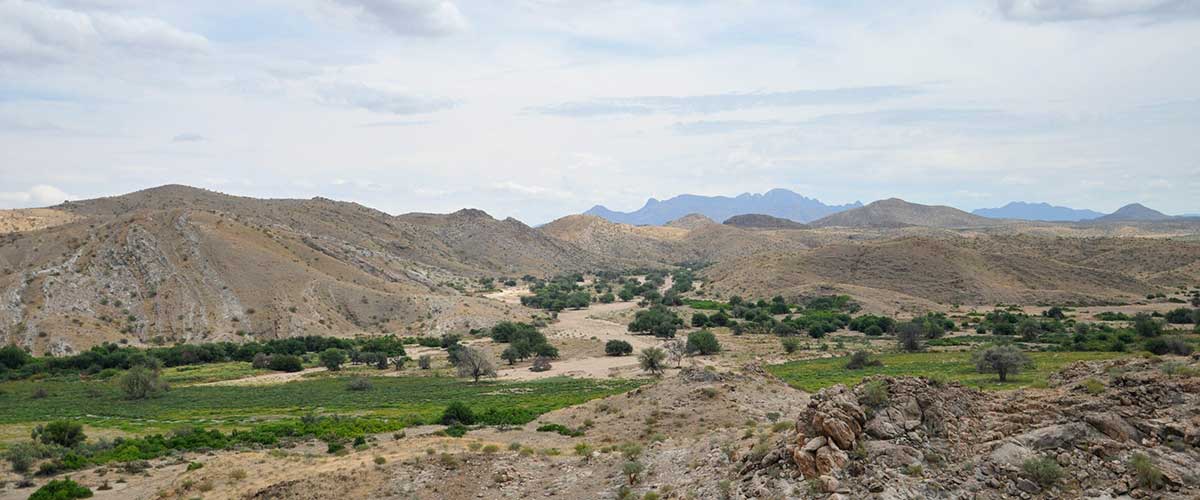Information
History
Between 1958 and 1972 pegmatite was mined on present Tsaobis Nature Park from which rare minerals like aquamarine, tourmaline and heliodor were derived.
After Namibian independence the „Tsaobis Leopard Park“ was founded as touristic destination on the farm. After the closure and nationalisation of the leopard park (the leopards and cheetahs were taken to Amani Lodge) new owners have now been found, who renovated the existing structures and build the new Restcamp.
In September 2012 Tsaobis Nature Park Restcamp has been newly opened.
Special geological features
Tsaobis is a geological wonderland; the rocks which are partly exposed like an open book to the surveyer, are part of the up to 650 million year old Damara Formation. Thus they formed at a time when the Gondwana supercontinent still existed and todays Namibia was covered by glaciers and was situated close to the South Pole.
The visitor can marvel at many rare minerals like pegmatite, aquamarine, tourmaline and heliodor. Furthermore a secret and magical valley is located in one of the branches of the Tsaobis River (Python Valley) as well as a a huge, virtually surreal marble amphitheatre.
A must and a feast for hobby geologists and guests who would like to become one.
Further information regarding the geological features of the region can be found with the Namibian geologist Nicole Grünert. Grünert, Nicole (2008): Namibia - Fascination of geology: A travel handbook. 6. Edition / ISBN 978-3-933117-12-0, EUR 16,50
Ongoing Projects
The Tsaobis Baboon Project
The Tsaobis Baboon Project is an international research programme based at Tsaobis Nature Park. Scientists and students on the Project study the ecology of chacma baboons and the wider desert landscape to improve our understanding of Namibia’s wildlife and environment.
Baboons are intelligent and highly adaptable animals that live in social groups consisting of migrant males, resident females, and their young. Research on the Tsaobis Baboon Project explores how social animals like baboons meet a variety of daily challenges, including how to find food, avoid predators, acquire mates and raise offspring. The findings of our research provide new insights into the lives of these fascinating animals, as well as informing the conservation and management of social species more generally.
Tsaobis is located on the course of the Swakop River, the largest of Namibia’s twelve westward-flowing ephemeral rivers. The Swakop is a linear oasis that supports both people and wildlife, but it is also under threat from damming, water extraction, and alien species. Research on the Tsaobis Baboon Project also seeks to understand the ecology of the Swakop River and its associated woodland vegetation, to inform future management of this valuable ecosystem.
The Tsaobis Baboon Project was initiated in 1990, and has continued research at Tsaobis on an annual basis since 2000. It is a collaboration between the Institute of Zoology, the research arm of the Zoological Society of London (ZSL), and the Gobabeb Research and Training Centre, a joint venture between the Ministry of Environment and Tourism (MET) and the Desert Research Foundation of Namibia (DRFN).
Our field team usually comprises a mixture of scientists and students from the UK, Namibia, and many other countries around the world. We also host young Namibian scientists as interns through our partnership with the Gobabeb Training and Research Internship Programme (GTRIP).



